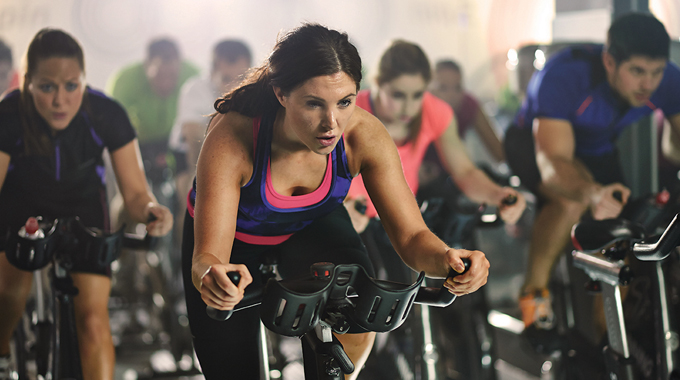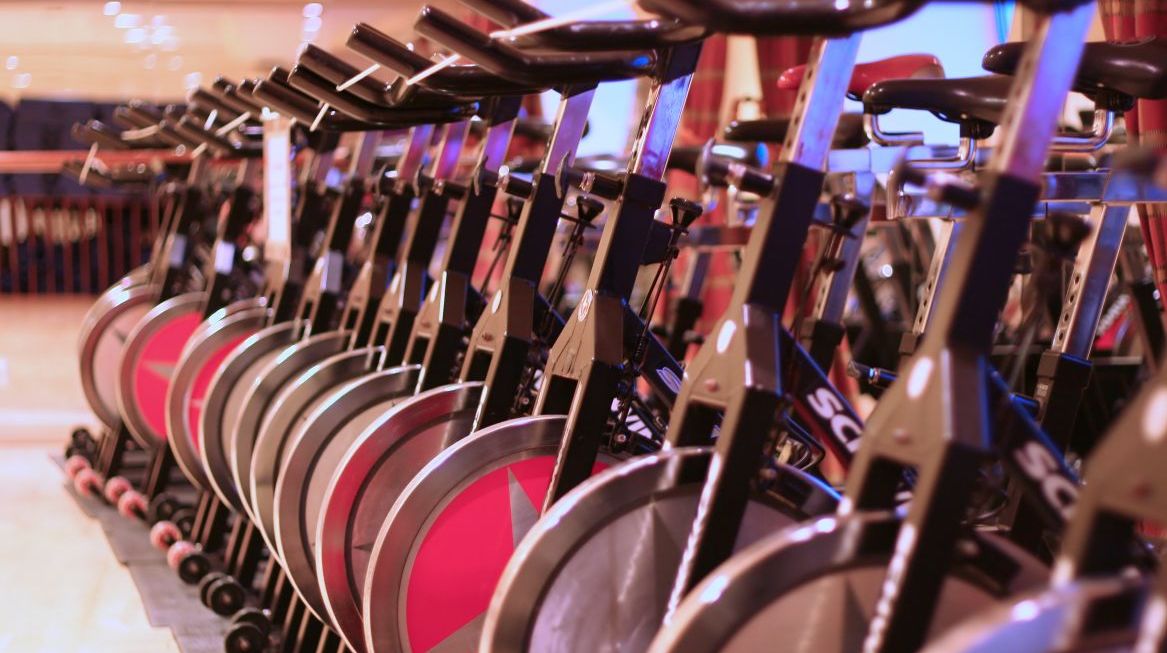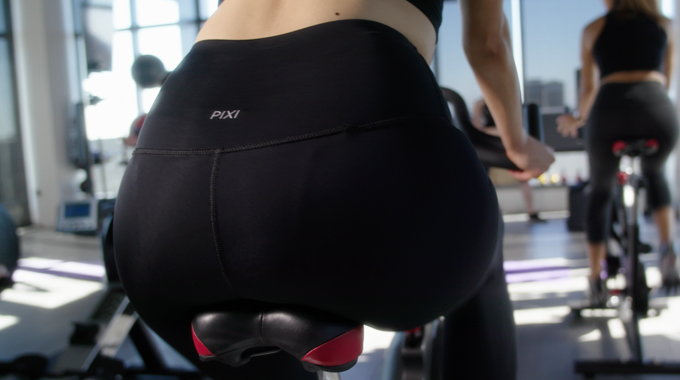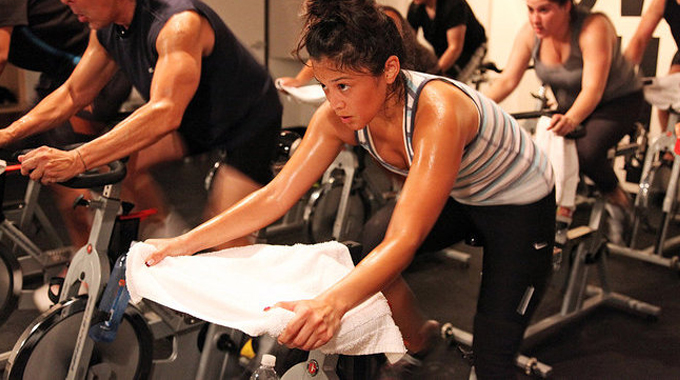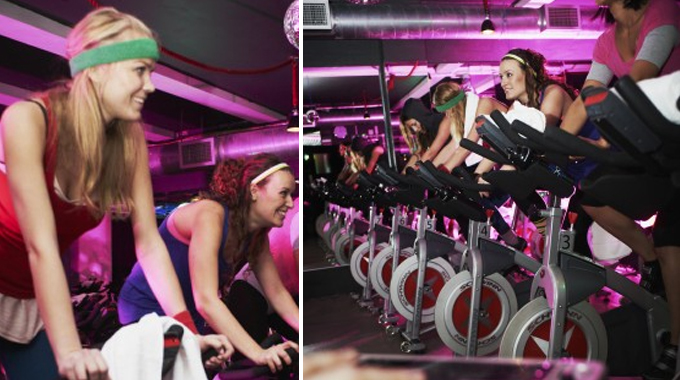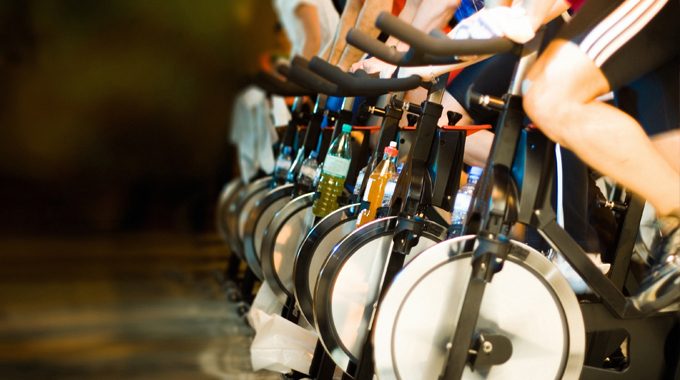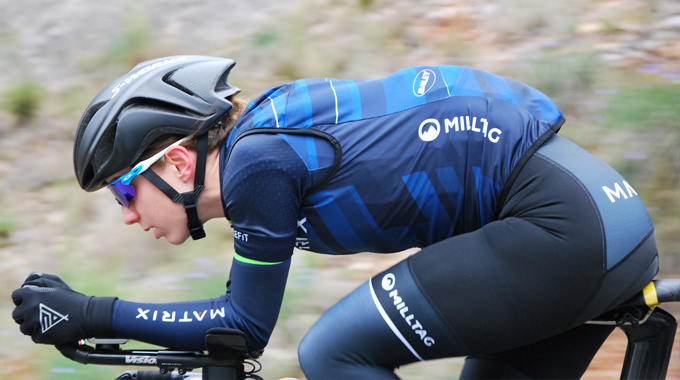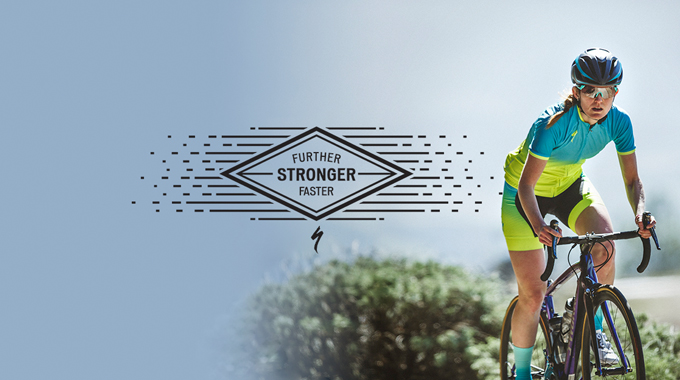Warm up complete, we moved on to a series of drills, essentially interval training. With the house music blaring, it was sometimes a tad tricky to understand what our teacher was saying and I was slightly confused to hear instructions to “change up four gears”. On my simple machine with merely a red knob to twiddle, how could you know what four gears were?
I also spent a fair bit of time messing around with the monitor trying to adjust said ‘gearing’ to match the suggested RPM and getting a little flustered. Looking around it appeared most people were ignoring such intricacies and focusing more on increasing and decreasing power and cadence at the correct moment rather than wasting time fine-tuning like I was. It seems as long as you make it more difficult for the 30-second ‘hill climb’ then lighten up for the active cooldown, you’ll get plenty from the workout.

As the class progressed and we increased the level of difficulty, my initial euphoria began to wear off. This was partly due to the fact we were pushing our bodies hard, which is the point, but I began to feel differently about the lack of visual stimulation.
I’d initially been content to get my head down, lose myself and pedal with my eyes closed to the music, but when simulating hill climbs the lack of a visual incentive made things tough.
I felt motivated by our trainer counting down our intervals – if you know you only have to complete another ten seconds sprint before a ‘rest’, it feels achievable – but I really missed seeing the top of the hill come closer and closer.
At this point, I began looking at my watch quite regularly and feeling a bit grumpy, but luckily this slump didn’t last too long.
With this class, the more you put in, the more you get out. If you don’t pedal as hard as you can during the sprints, or switch up to a heavy enough ‘gear’, you’re only cheating yourself.
